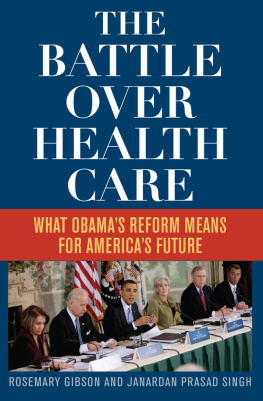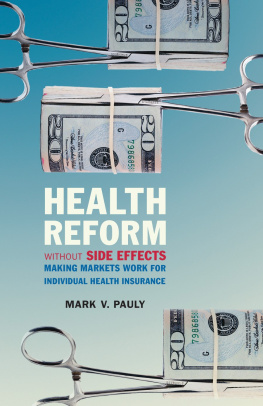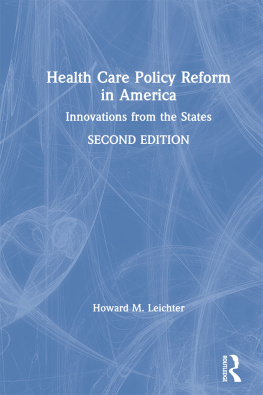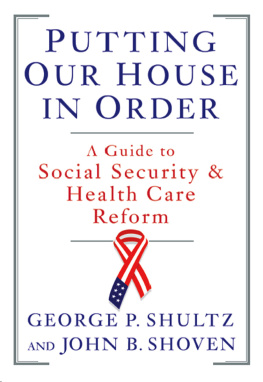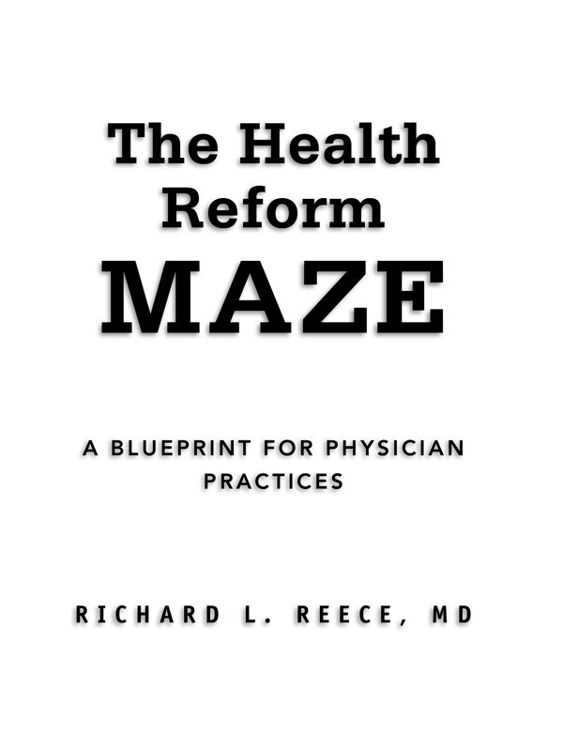About the Author
Richard L. Reece, MD, pathologist, writer, and editor, is former Editor in Chief of Minnesota Medicine and Physician Practice Options . He has written 10 books on the healthcare system, including Voices of Health Reform: Interviews with Health Care Stakeholders at Work; Innovation-Driven Health Care: 34 Key Concepts for Transformation ; and, more recently, Obama, Doctors, and Health Reform . In the last, he explores what physician mindsets, patient concerns, U.S. culture, and our healthcare systems complexities portend for health reform.
Dr. Reece works with The Physicians Foundation, a nonprofit philanthropic organization that represents physicians in state medical societies. The Physicians Foundation is made up of executive directors of state medical societies and seeks to advance the work of practicing physicians and to improve the quality of healthcare for all Americans. The opinions expressed here are his own and not those of the Foundation.
For four years, he has written a blog, Medinnovationblog.blogspot.com, which has over 1700 entries on healthcare innovation and reform. He is also on Twitter and Facebook. His Web site, www.doctorreece.com, is intended give insight into doctors reactions to health reform and into innovations that may transform the healthcare system. In the upper right corner, you can click and read his latest Medinnovation blog. In the lower right corner, you can read his Tweet of the day. Look for new features such as videos and images in the coming months.
Surveys indicate 90% of physicians believe they have been excluded from the health reform process. This concerns Dr. Reece, for it is physicians who must deliver the care promised by reforms. Any reforms will necessarily involve the government to some extent, but the resulting reforms should be more commonsensical and less massive than the present proposed reforms. He believes reform should be incremental. It should focus on less costly, more convenient, more effective, less disruptive, and more market-oriented solutions building on the merits of the present system while minimizing its faults. Dr. Reece stresses that physicians and patients must work together more closely to build a more personal, patient-centered system without massive interventions by third parties.
Meanwhile, the Patient Protection and Affordable Care Act is the law of the land. Physicians must deliver the care dictated under its mandates. They must accept government reimbursements 30% below pay offered by private plans, and they must sustain their practices based on lower margins. And they must find ways to cope with the influx of 32 million to 50 million more government-subsidized patients.
Dr. Reece was educated at Duke University and Duke University School of Medicine. He did his postgraduate training at Hartford Hospital and attended an 8-week course on health system management at Harvard Business School. He resides in Old Saybrook, Connecticut, with his wife, Loretta, a graduate of the Massachusetts General Hospital School of Nursing. He has two sons, Spencer, a nationally known poet and an aspiring Episcopalian priest, and Carter, who works at Brooks Brothers in New York City. Dr. Reece can be reached at rreece1500@aol.com or through his Web site at www.doctorreece.com, or at his Medinnovation blog.
Foreword
Reform Blueprint on the First Anniversary of the Passage of the Health Reform Law
A year ago, March 23, 2010, Congress passed the Patient Protection and Affordable Care Act (PPACA). Since then, the Act has bumped along a rocky and slippery course, in the Never-Never Netherworld between acceptance and rejection.
This is a blueprint of health reform to dateits potholes, slippery spots, turns, twists, detours, dead-ends, open-ends, pratfalls, pitfalls, and bear traps.
Clear exits and destinations remain murky.
As 2011 unfolds and Republicans take control of the House and reach a filibuster-proof minority in the Senate, the American healthcare system has reached a tipping point.
Sometime this year, the government will pay for 50% of private expenditures for healthcare in America. If the health reform law goes into full effect in 2014, this percentage will grow to perhaps 70%, as in other nations. If that occurs, the Federal Piper will call the tune, tipping the healthcare system toward government control.
This book is one physicians view of the political and practice environment culminating in the tipping point. The book contains multiple essay blogs I have composed over the last four years on my Medinnovation blog. The blogs appearing here were published from March 23, 2010, when PPACA passed, to March 23, 2011.
The blogs average 600 words in length. They are not intended to be comprehensive, or to be read sequentially, or to have any single dominant theme other than to discuss developments related to the health reform law. Instead, these blogs are snapshots of current reform and future reform consequences, many unintended. They are a bystanders verbal vignettes of an evolving reform drama, rather than words of a direct participant in events.
What will happen between now and 2014, when the health reform law is slated to take full effect, is anybodys guess. Several things, however, are clear. Costs are rising at an accelerated pace, employers are dropping coverage and limiting benefits, and the reform law has not received the expected popularity bounce in the polls. As I write, 56% of Americans oppose it, and 60% believe it ought to be repealed. And the majority of Americas physicians and business owners either oppose the law or remain skeptical, uncertain, or fearful about its consequences.
The health reform law, now called the Accountable Care Act or ObamaCare for short, has experienced a rough and controversial beginning. Some dub its passage as an historic achievement. Others refer to it as a monstrosity.






